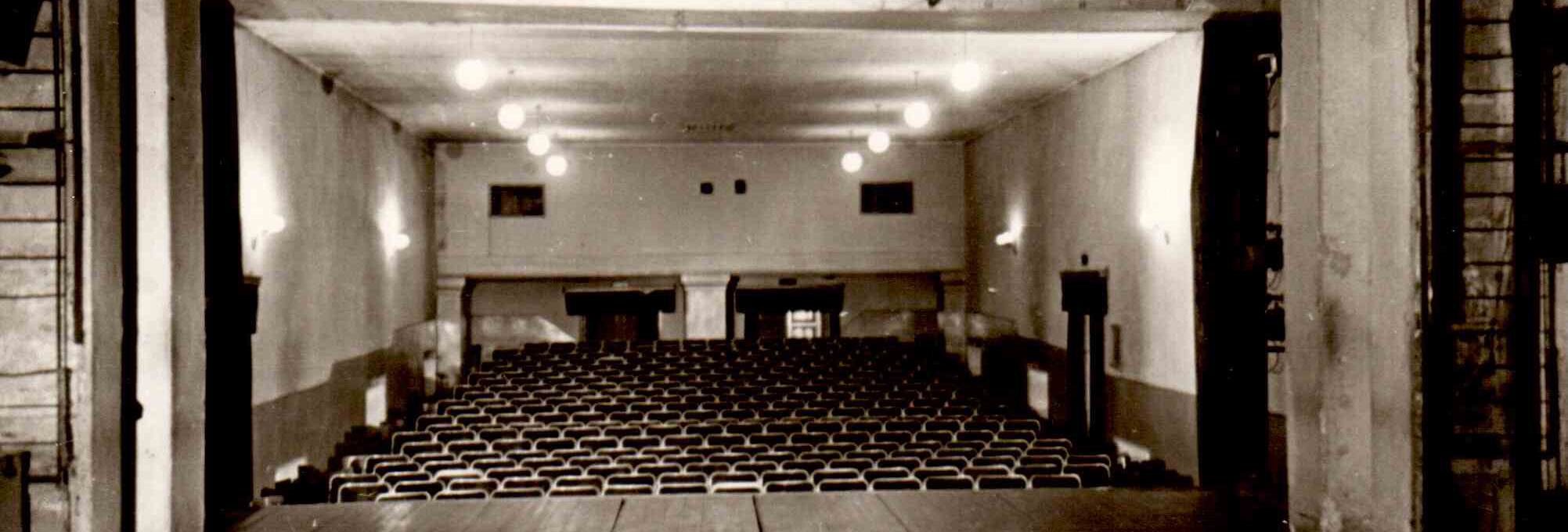The story of Lithuanian theatre's recovery began with a sudden gust of significantly greater artistic freedom. The frozen list of socialist realist works was increasingly encroached upon by "thawed", i.e. more sensitive, dramaturgy evidencing a greater flexibility in the canons of socialist realism: plays by Viktor Rozov, Aleksei Arbuzov, Nazim Hikmet, Kazys Saja, and others. This encouraged theatres to reclaim the fundamental theatrical values that had been desecrated in the first post-war decade: the pursuit of a more sincere connection with the problems of the day, a deeper understanding of conflict, the expansion of the range of human portrayal and its "internalization", and the refinement of psychologism. The scope of repertory genres slowly increased, including the performance of world classics. The exploration of historical tragedy or modern Western drama was no longer considered a deadly sin. Lithuanian theatre regained its right to literature, giving it a platform for developing professional self-respect and the search for new forms of theatrical expression.
|
See also: Kazys Saja and Lithuanian Dramaturgy in the Soviet Era.
|
It is important to note that Lithuanian theatre was prepared to meet the challenges of this "thaw". It entered the 1960s on a stronger professional footing and continued to build on this strength – first and foremost in the field of direction.
At that time, Lithuanian theatre was rediscovering Juozas Miltinis. In the mid-1950s he began to express himself more as a director than a teacher. Miltinis' began his career as an instructor in 1938, when he began working with completely inexperienced youth who had found their way to the acting studio of the Kaunas Hall of Labor. Shortly thereafter, a group of these young actors formed the company of the new Panevėžys Drama Theatre, with Miltinis as their leader and the sole director charged with conducting intensive directorial work. Nevertheless, during the early history of the Panevėžys Drama Theatre, Miltinis probably devoted more of his efforts toward teaching rather than directing, focusing on the development of his actors in the belief that the success of his dream of a great theatrical flight required the highest calibre of acting mastery, honed over a long period of time.
New, young names in Lithuanian directing quickly appeared on the scene in the second half of the 1950s and in the 1960s. Henrikas Vancevičius debuted at the Kaunas Drama Theatre in 1954, Vytautas Čibiras (1936–2009) staged his first productions at the Academic Drama Theatre in 1960, and Mamertas Karklelis (1931-1999) began work at the Šiauliai Drama Theatre in 1962. Povilas Gaidys started work at the Klaipėda Drama Theatre in 1963, Aurelija Ragauskaitė came to prominence at the new State Youth Theatre in 1966, and Jonas Jurašas first lent his voice to the theatre that same year in Šiauliai, and, one year later, in Vilnius. Naturally, the ranks of Lithuanian theatre actors also began to strengthen at this time, and a cast of new, exceptional actors appeared. Formidable, cohesive and united theatre companies emerged under the direction of Miltinis in Panevėžys, Vancevičius in Kaunas, and Gaidys in Klaipėda.
An Acting Department was established at the State Conservatory in 1952. Lithuanian theatres had their first opportunity to add new graduates of the Conservatory to their companies in the mid-1950s. The fastest rising companies were those that retained the strong "teaching" directors that continued to develop the skills of their actors and fostered an atmosphere of congeniality, ensemble and community. Lithuanian theatre caught its breath and became more diverse. The multiplicity of themes, genres and styles was united by an ever-increasing effort to gradually purge the dregs of the socialist realist aesthetic brought about by the dogmas of the "new reality". Lithuanian theatre was revived through an ensuing polemic with the dismal, gray, monotonous and unimaginative nature of everyday life.
Undoubtedly the strongest center of this polemic emerged, uniquely, in the late 1950s and 1960s far from the larger centers of Lithuanian culture at the Panevėžys Drama Theatre, which Miltinis transformed into the most intellectual, modern, and responsive Lithuanian theatrical zone of that era.




Comments
Write a comment